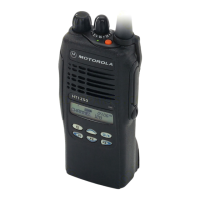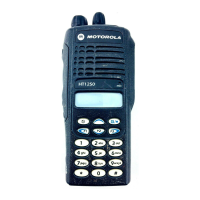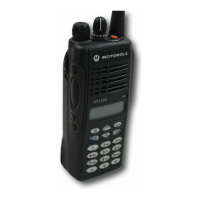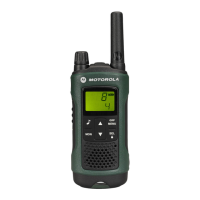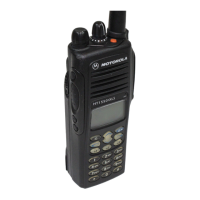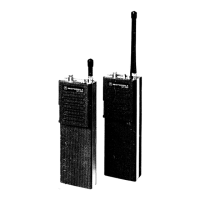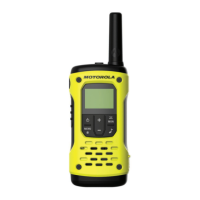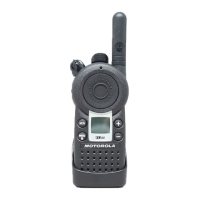Low Band, 800 MHz, PassPort & 900 MHz Theory of Operation: 900 MHz Receiver 7-21
The IF signal applied to pin 3 of U351 is amplified, down-converted, filtered, and demodulated, to
produce the recovered audio at pin 27 of U351. This IF IC is electronically programmable, and the
amount of filtering (which is dependent on the radio channel spacing) is controlled by the
microprocessor. Additional filtering, once externally provided by the conventional ceramic filters, is
replaced by internal filters in the IF module (U351).
The IF IC uses a type of direct conversion process, whereby the externally generated second LO
frequency is divided by two in U351 so that it is very close to the first IF frequency. The IF IC (U351)
synthesizes the second LO and phase-locks the VCO to track the first IF frequency. The second LO
is designed to oscillate at twice the first IF frequency because of the divide-by-two function in the IF
IC.
In the absence of an IF signal, the VCO will “search” for a frequency, or its frequency will vary close
to twice the IF frequency. When an IF signal is received, the VCO will lock onto the IF signal. The
second LO/VCO is a Colpitts oscillator built around transistor Q350. The VCO has a varactor diode,
CR350, to adjust the VCO frequency. The control signal for the varactor is derived from a loop filter
consisting of R365, C391, and C392.
The IF IC (U351) also performs several other functions. It provides a received signal-strength
indicator (RSSI) and a squelch output. The RSSI is a dc voltage monitored by the microprocessor,
and used to control the automatic gain control (AGC) circuit in both the front-end and the IF.
The demodulated signal on pin 27 of U351 is also used for squelch control. The signal is routed to
U851 where a “flutter fighter” process is implemented. The signal leaves U851 via pin F4 and is then
routed to U404 (ASFIC) where squelch signal shaping and detection takes place. The demodulated
audio signal is also routed to U404 for processing before going to the audio amplifier for
amplification.
7.11.3 Receiver Back-End (For PCB No. 8471203M01)
The receiver back end is a dual conversion design. The 73.35 MHz high IF consists of 4-pole crystal
filter FL350, IF amp Q350, 4-pole crystal filter FL351 and IF amp Q351. Each crystal filter has a 3 dB
bandwidth of 6.0 kHz and a maximum insertion loss of 4 dB. The output of Q351 is applied to the
input of the receiver IFIC U350. Diode D350 prevents overdriving the IFIC.
The IFIC is a low-voltage monolithic FM IF system incorporating a mixer/oscillator, two limiting IF
amplifiers, quadrature detector, logarithmic received signal strength indicator (RSSI), voltage
regulator and audio and RSSI op amps. The second LO frequency is determined by Y350.
Additional IF selectivity is provided by two ceramic filters, FL352 (between the second mixer and IF
amp) and FL353 (between the IF amp and the limiter input). FL352 is a 6 element filter with a 6dB
bandwidth of 9 kHz. FL353 is a 4 element filter with a 6dB bandwidth of 12 kHz. These bandwidths
are optimum for 12.5 kHz channel spacing systems. Ceramic resonator Y351 provides phase vs.
frequency characteristic required by the quadrature detector, with 90 degree phase shift occurring at
455 kHz. Buffer Q352 provides a lower driving impedance from the limiter to the resonator, improving
the IF waveform and lowering distortion.
7.11.4 Hear Clear IC
Hear Clear (HC) IC is typically used for 900 MHz radios. The HC IC comprises three main internal
circuit blocks:
• Compressor,
• Flutter Fighter
• Expander Circuits.
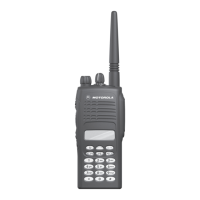
